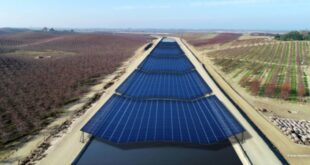Water conservation throughout California dropped some 36 percent in August as compared to the same period last year leaving water officials to question their decision of earlier this year to allow urban water agencies to set their own conservation standards based on a “stress test” of supply reliability.
Felicia Marcus, chairwoman of the State Water Resources Control Board, has indicated that water regulators will be looking for the causes of the increased water usage. As the State Water Board continues to monitor conservation levels, a return to state-mandated conservation may be necessary beginning next year.
“The statewide August conservation results raise questions, and we are examining the data to understand why some areas slipped more than others,” said State Water Board Chair Felicia Marcus. “Are we seeing relaxation of conservation messaging and programs, or are we seeing abandonment of programs? One may be appropriate, the other is not. It’s a mixed picture. Many communities who certified that they didn’t ‘need’ to conserve are still conserving up a storm, while others have slipped more than seems prudent.” Marcus added: “While last year’s rain and snow brought a respite for urban California, we are still in drought, and we can’t know what this winter will bring. What we do know is that climate change will continue to make our water years even more unpredictable, so we need to retain our conservation habits for the long term, rain or shine, drought or no drought.”
Some Californians have continued to conserve water in significant amounts even in the absence of state-mandated conservation targets. The cumulative average savings from June 2015 through August 2016 was 23.3 percent, compared with the same months in 2013. Since June 2015, two million acre-feet of water has been saved — enough water to supply 10 million people, more than one-quarter the state’s 38 million population, for a year.
But, indicative of the State Water Board’s concern over conservation was statewide water savings for August 2016 was just 17.7 percent (124,094 acre-feet or 40.4 billion gallons) and a decrease from July 2016’s 20 percent savings in comparison to baseline numbers from 2013. This was also a decrease from August 2015’s 27 percent statewide savings (63.5 billion gallons). August 2016 water savings are 36 percent lower than August 2015.
Marcus was pragmatic in summing up to the situation saying, “We’re at yellow alert. I’m not ready to t to red alert until we figure it out.”
Some suppliers have seen modest reductions in conservation levels, based upon visibly improved water supply conditions or modest adjustments in their local conservation requirements. However, some suppliers have seen significant drops in conservation savings, raising questions about whether those suppliers are effectively communicating the need to conserve with their customers.
“Percentages alone tell only part of the story, because a 15 percent reduction by someone using under 100 gallons per person a day can be more challenging than a 30 percent reduction by someone using 250 or 300 gallons a day,” Marcus said. “That’s true of agencies and it is true for individuals. In particular, we urge suppliers where conservation levels have dropped steeply to reach out to high use customers to find ways to conserve, and to join their community’s conservation efforts. The legislature’s passage and Governor’s signing of SB 814 will help water suppliers send monetary signals to their highest users about the need to keep conserving while the drought continues. Most important, it sends a signal that all Californians are in this together and that fairness includes those who use the most doing their part along with the rest of us.”
SB 814 (Hill) requires urban water suppliers to establish financial penalties for excess water use during droughts. Suppliers can either create excess-use ordinances with defined penalty amounts, or they can adopt rate structures that charge their highest users more during drought emergencies.
 California Water News Daily Your Source For Water News in California
California Water News Daily Your Source For Water News in California


